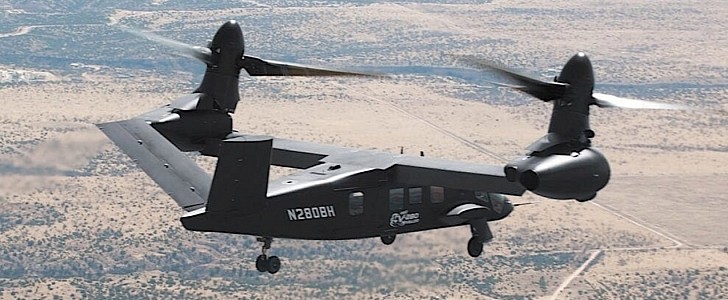Later this summer, the U.S. Army is expected to release a Request for Proposals for the Future Long-Range Assault Aircraft (FLRAA) program. That would be the program that seeks to create the next generation combat helicopters.
So far, two companies are involved in the program, Sikorsky with the SB-1 Defiant and Bell with the V-280 Valor. The former is a compound helicopter with coaxial rotors, while the latter a tiltrotor machine, and both are in their final stages of development.
The Valor, which will end the supremacy of the V-22 Osprey in this particular tiltrotor segment, is described as twice as fast and capable as other vertical lift aircraft. It can reach a top speed of 345 mph (555 kph) and fly for as much as 575 miles (925 km), carrying with it a crew of four and an additional 12 soldiers or, when it cargo configuration, payloads weighing as much as 12,000 lbs (5.4 metric tons).
At the end of last week, its maker, Bell, announced that it is getting ready to transition the aircraft from testing stage to getting it ready for the Army's specific fighting needs.
The company has been flying the Valor since three years ago, during which time it was in the air for 214 hours during 15 sorties, and checked all the boxes when it comes to low-speed agility, long-range cruise, high-speed flights, and rapid mission systems integration.
Now comes the time to focus on “preliminary designs for major subsystems and the conceptual weapons systems,” says the company, which should be ready “in line with the Army’s schedule.”
Bell has already begun assigning contracts for the production version Valor, with France-based multinational corporation Safran Landing Systems being tasked back in May with providing the main landing gear, tail landing gear, wheels and brakes, extension/retraction system, steering, and indication sensors.
No official date for when the aircraft will enter service is known.
The Valor, which will end the supremacy of the V-22 Osprey in this particular tiltrotor segment, is described as twice as fast and capable as other vertical lift aircraft. It can reach a top speed of 345 mph (555 kph) and fly for as much as 575 miles (925 km), carrying with it a crew of four and an additional 12 soldiers or, when it cargo configuration, payloads weighing as much as 12,000 lbs (5.4 metric tons).
At the end of last week, its maker, Bell, announced that it is getting ready to transition the aircraft from testing stage to getting it ready for the Army's specific fighting needs.
The company has been flying the Valor since three years ago, during which time it was in the air for 214 hours during 15 sorties, and checked all the boxes when it comes to low-speed agility, long-range cruise, high-speed flights, and rapid mission systems integration.
Now comes the time to focus on “preliminary designs for major subsystems and the conceptual weapons systems,” says the company, which should be ready “in line with the Army’s schedule.”
Bell has already begun assigning contracts for the production version Valor, with France-based multinational corporation Safran Landing Systems being tasked back in May with providing the main landing gear, tail landing gear, wheels and brakes, extension/retraction system, steering, and indication sensors.
No official date for when the aircraft will enter service is known.







